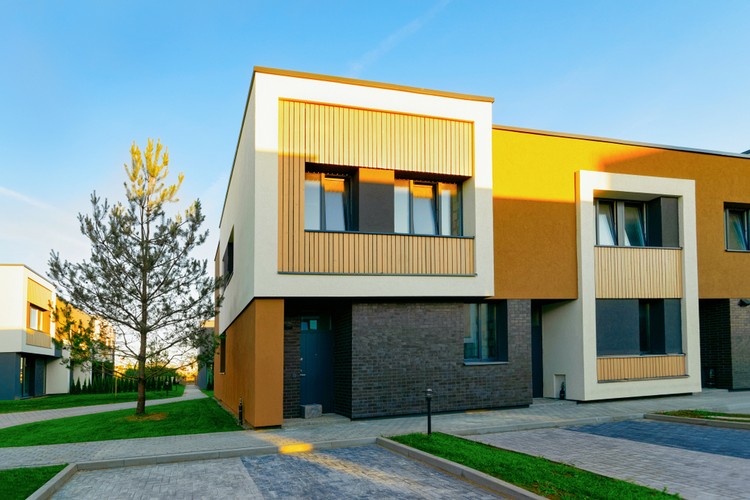The Fascinating World of Abandoned Houses: Exploring Real Estate's Hidden Gems
Abandoned houses have long captivated the imagination of urban explorers, photographers, and real estate enthusiasts alike. These forgotten structures, once vibrant homes filled with life and memories, now stand as silent testaments to the passage of time. In this article, we'll delve into the intriguing world of abandoned houses, examining their significance in the real estate market and the potential they hold for adventurous property investors.

-
Financial hardship: Homeowners may be unable to afford mortgage payments or maintenance costs, leading to foreclosure or voluntary abandonment.
-
Natural disasters: Severe weather events or environmental catastrophes can render homes uninhabitable, forcing residents to relocate.
-
Population shifts: As communities change over time, some areas may experience significant population decline, resulting in vacant properties.
-
Legal issues: Complicated ownership disputes or inheritance problems can leave properties in limbo for years.
Understanding the underlying causes of abandonment is crucial for those interested in the potential acquisition and rehabilitation of these properties.
What legal considerations surround abandoned houses?
The legal landscape surrounding abandoned houses can be complex and varies depending on local regulations. Some key considerations include:
-
Ownership rights: Determining the rightful owner of an abandoned property can be challenging, especially if there are outstanding liens or tax issues.
-
Squatters’ rights: In some jurisdictions, individuals who occupy abandoned properties for a certain period may gain legal claim to the property.
-
Zoning regulations: Local zoning laws may impact the potential uses or renovations of abandoned houses.
-
Safety concerns: Abandoned properties often pose safety hazards, and local authorities may require owners to secure or demolish dangerous structures.
Navigating these legal complexities is essential for anyone considering purchasing or repurposing an abandoned house.
How do abandoned houses impact local real estate markets?
The presence of abandoned houses can have significant effects on surrounding properties and the broader real estate market:
-
Property values: Neglected, vacant homes can lower property values in the immediate vicinity, affecting neighboring homeowners.
-
Community perception: Areas with numerous abandoned houses may be perceived as less desirable, potentially deterring new residents or businesses.
-
Crime rates: Abandoned properties can attract criminal activity, leading to increased safety concerns in the neighborhood.
-
Renovation opportunities: For investors and developers, abandoned houses represent potential opportunities for rehabilitation and profit.
Understanding these market dynamics is crucial for both residents and potential investors in areas with abandoned properties.
What opportunities do abandoned houses present for investors?
While abandoned houses may seem like eyesores to some, they can offer unique opportunities for savvy real estate investors:
-
Below-market acquisition: Abandoned properties can often be purchased at significantly reduced prices compared to occupied homes in the same area.
-
Renovation potential: With proper planning and investment, abandoned houses can be transformed into attractive, livable spaces.
-
Historical preservation: Some abandoned properties may have historical or architectural significance, offering opportunities for restoration and preservation.
-
Community revitalization: Rehabilitating abandoned houses can contribute to neighborhood improvement and increased property values.
Investors should carefully consider the costs and potential returns associated with renovating abandoned properties before making any purchase decisions.
How can individuals find and evaluate abandoned houses?
For those interested in exploring or potentially acquiring abandoned houses, several methods can be employed:
-
Local government records: Many municipalities maintain lists of vacant or abandoned properties.
-
Real estate websites: Some online platforms specialize in listing distressed or abandoned properties.
-
Drive-by scouting: Visually identifying abandoned houses in target neighborhoods can be an effective method.
-
Networking: Building relationships with local real estate agents, investors, and community members can lead to valuable information about abandoned properties.
When evaluating abandoned houses, it’s essential to consider factors such as structural integrity, renovation costs, and potential resale value.
What are the challenges of renovating abandoned houses?
Renovating abandoned houses can be a rewarding but challenging endeavor. Some common obstacles include:
-
Structural issues: Years of neglect can lead to significant structural damage, requiring extensive repairs.
-
Outdated systems: Plumbing, electrical, and HVAC systems may need complete overhauls to meet modern standards.
-
Environmental hazards: Abandoned properties may contain asbestos, lead paint, or other hazardous materials that require specialized removal.
-
Zoning and permit challenges: Obtaining necessary permits and adhering to local regulations can be time-consuming and complex.
Despite these challenges, many individuals find the process of breathing new life into abandoned houses to be a fulfilling and potentially profitable endeavor.
Abandoned houses represent a unique intersection of history, real estate, and community development. Whether viewed as eyesores or opportunities, these forgotten properties continue to spark curiosity and interest among diverse groups of people. By understanding the complexities surrounding abandoned houses, individuals can make informed decisions about their potential role in preserving, rehabilitating, or repurposing these neglected gems of the real estate world.





